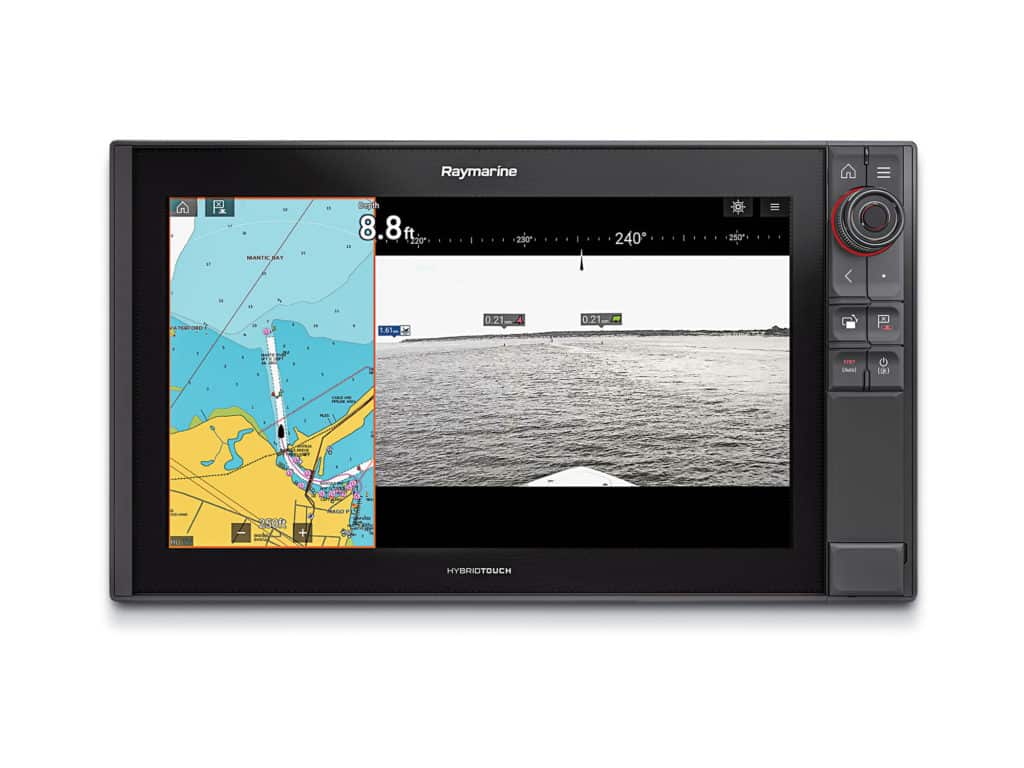
Today’s marine technology provides yachtsmen with a depth of information that was unthinkable just a few years ago. Over the years, ever-evolving marine electronics have helped me navigate challenging conditions, assist vessels in distress and turn a slow day of fishing into one of the most memorable trips of all time.
Radar: Something in the Mist
I don’t like fog.
It was late spring, and I was slated to run a 40-foot convertible from Manhattan, New York’s Chelsea Piers to the eastern south shore of Long Island. Easy enough. However, rising air temperatures and cool water temperatures in the northeast can make for can’t‑see-the-bow fog.
The visibility heading down the Hudson River was okay. I could see the ferry traffic and kept my radar tight, but once I got the boat to where the river collides with the Atlantic Ocean, I was met with the thickest blanket of fog I’d ever seen. The 13,700-foot-long Verrazzano Narrows Bridge, just 50 yards away, was completely hidden. Then came the deep, resonating fog horn of a substantial ship heading upriver. The target on my radar took up the entire space between the channel markers. Time to move.
I slid off to the side, putting a safe distance between my vessel and this hulking, moving mass. I heard the ship’s hull sliding through the water as it passed by. I could barely make out the rusting red hull, and I never saw the top of the ship.
My radar, plotter and depth sounder took the place of my eyes. I listened for other vessels as we crawled along the coast. Occasionally, I would hear motors approaching and double check the bearing, adjusting course as needed.
After reaching my destination inlet, I turned the boat north and passed beyond the breakwater. The fog disappeared instantly, and a bright sun led the way to the marina.
The knots in my shoulders relaxed; after tying up, I found a cold beverage in the galley. When I opened the fridge, a small cloud of fog exited the appliance. I decided that kind of fog was fine with me.
VHF Radio: Rescue Times Two
It was a full-on tempest with heavy rain, howling wind and frequent lightning strikes. Our crew huddled in the bridge deck waiting it out, 80 miles from nowhere, along with a 400-boat fleet competing in a marlin tournament off the US Mid‑Atlantic coast. We heard a crackling voice on the tournament channel.
One of the teams, on a brand‑new 35-foot convertible, was struck by lightning. The engines were dead. The electronics were down. Their only source of communication was a handheld VHF radio.
We were close enough to pick up the transmission, albeit faintly. As our crew worked out the stricken crew’s position, another tournament boat reported over the radio that they had located the stranded team and were heading over to tow them back to port.
Two years later, a handheld VHF radio saved the day again. This time we were the rescue team.
Once again, our team was competing in a tournament offshore when we heard a faint voice requesting assistance. This time the weather was gray, but calm, however, a mid-20-foot center-console had lost all power. The boat and its two-man crew were drifting offshore.
We got a fix on the stricken vessel and made our way to the crew—who were cold, but happy to see us. We bridled their boat behind ours and headed toward shore while setting up a rendezvous point with an outbound tow boat. Within a few hours, the boat and crew were transferred safely and everyone got home in one piece. A couple weeks later, our captain received a bottle of Dom Perignon from the grateful crew.
Fish Finder: Tuna Frenzy
It was a late-summer afternoon as our crew arrived 100 miles offshore for an overnight trip to the Northeast canyons for yellowfin tuna. The sea was table-top flat. During the afternoon troll, we couldn’t buy a bite.
As the sun set, we drove around the edges of the canyon looking for some signs of life. The surface was still. No bait. No birds. No fish.
It appeared we were in for a long night of nothing, until the boat’s fish finder showed a brick-red line stretching down from about 100 to 140 feet. Because the seafloor was more than 1,000 feet down, we guessed it was bait. A lot of it. Our best guess was squid. And where there’s bait, there’s fish.
A couple of our crew dropped down squid jigs. In short order, a squid came over the gunwale. The ink-shooting cephalopod went right back down on a hook. Boom. Fish on.
We all switched to a sabiki rig—a bait-catching rig with multiple hooks—so we could harvest more than one squid at a time. We filled the livewell with the tuna candy. The sounder showed the ocean was thick with squid; so much that we could feel the weight of our rig bump and stop when it hit the school.
From sunset until sunrise, we always had at least one fish on; most of the time we had two or three hooked up. Our crew limited out on yellowfin tuna from 50 to 80 pounds and released dozens more. When all was said and done, we’d hooked up more than 60 fish and left them biting. If we hadn’t had that fish finder, we’d never have seen that school of bait and experienced that epic night of angling.





